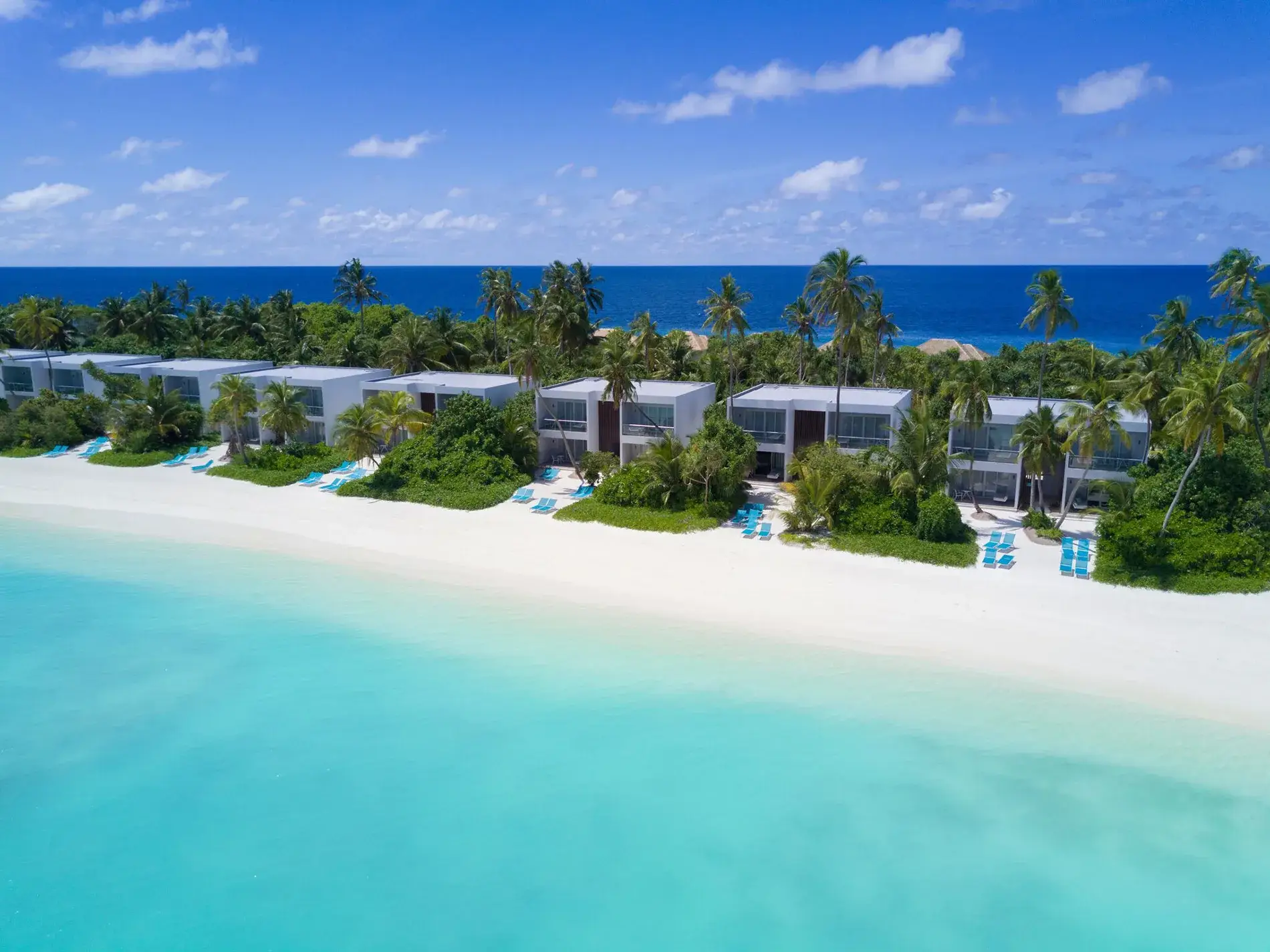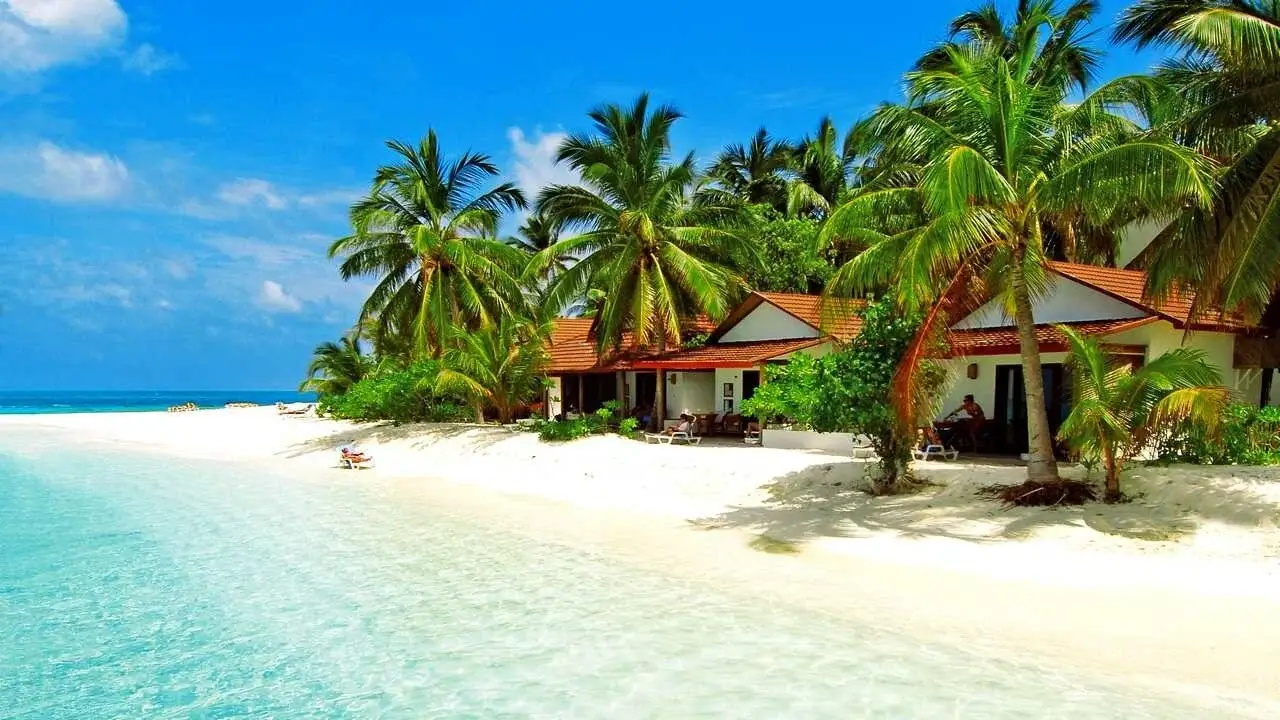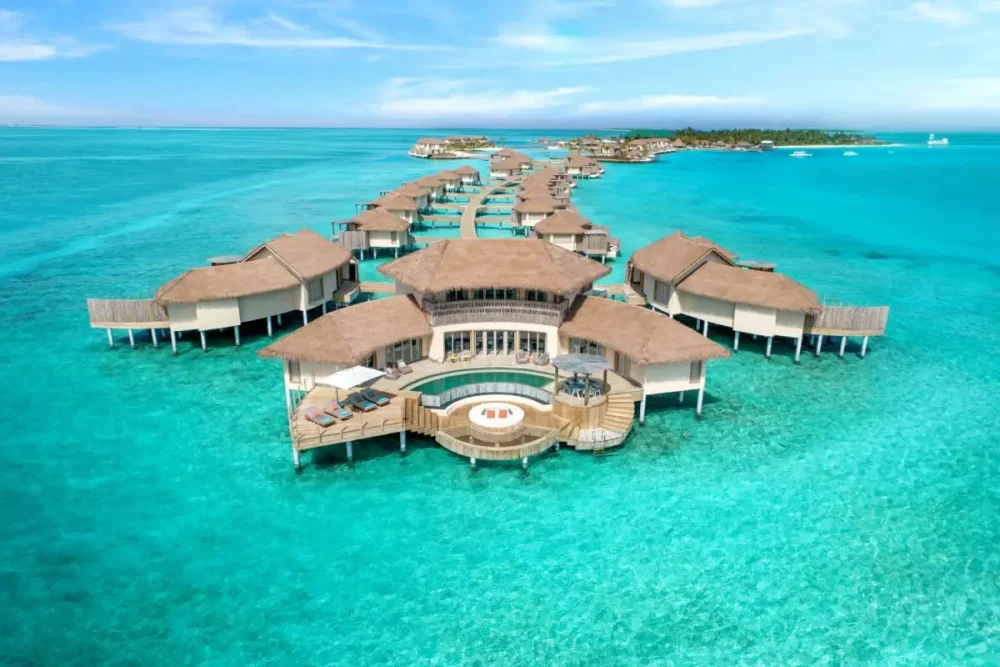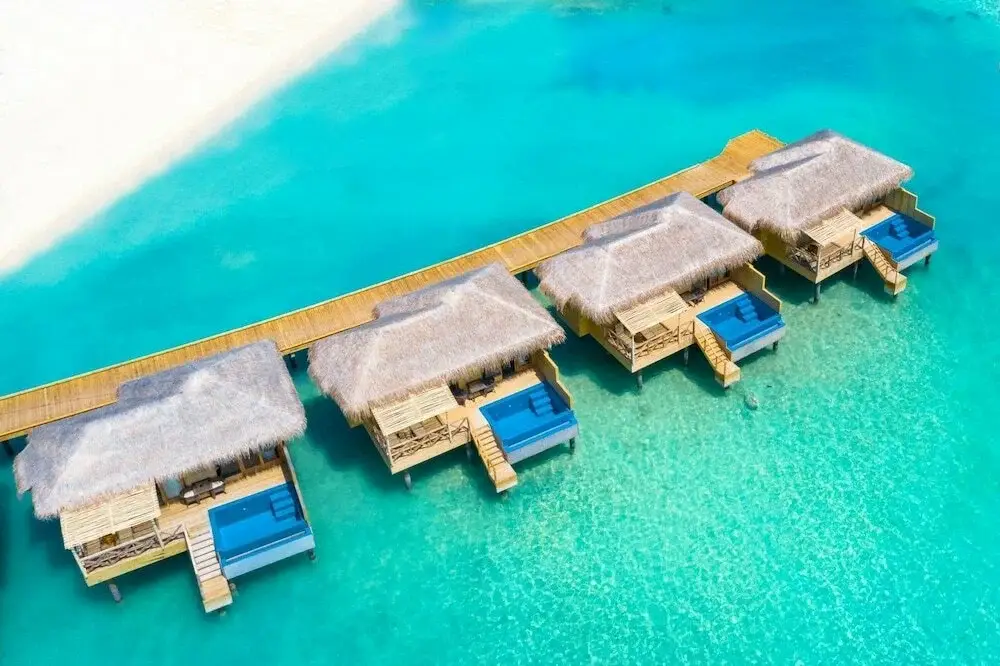The Maldives is an archipelago of over 1000 coral islands scattered across the Indian Ocean. White sand formed by crushed coral, azure water and rich underwater life make these islands a true paradise for travellers.
The review presents the most beautiful beaches in the Maldives, which mesmerise with pristine nature and offer ideal conditions for a holiday. Whether you’re looking for a secluded retreat, a snorkelling spot or family-friendly comfort, there’s something for everyone.

Top 15 most beautiful beaches in the Maldives
The variety of beaches is amazing: from deserted corners to elite resort areas with developed infrastructure. Among the best:
- Cocoa Island Beach is a narrow sand spit with crystal clear water and coral reefs.
- Baros Beach is an impeccable combination of privacy, premium service and natural beauty.
- Lily Beach – snow-white sand, comfortable sun loungers, easy access to the water.
- Hulhumale Beach is a public beach overlooking the ocean, accessible without staying in the resorts.
- Dhigurah Beach is one of the few places where you can see whale sharks and go diving.
- Nalaguraidhoo Beach is a beach at Sun Island Resort with coconut palms and calm waters.
- Maafushi Beach – democratic atmosphere, cafes, bars, lots of water activities.
- Fihalhohi Island Beach is a picturesque beach with lush vegetation and ideal snorkelling conditions.
- Thoddoo Beach is a spacious beach surrounded by tropical papaya and watermelon plantations.
- Ukulhas Beach is an example of an eco-friendly holiday destination with crystal clear waters.
- Hanifaru Bay Beach is a nature reserve known for the seasonal migrations of giant mantas.
- Kuramathi Beach is a long sand spit going far into the ocean.
- Vabbinfaru Beach is a beach with a secluded atmosphere, first class villas and impeccable service.
- Banyan Tree Beach is part of a nature reserve surrounded by mangrove forests and wild birds.
- Mudhdhoo Beach is a famous beach with bioluminescent plankton creating a glowing sea effect.
These Maldives holiday beaches combine crystal clear water, manicured grounds and extraordinary nature. Each has a distinctive atmosphere, whether it’s the serenity of a private island or the dynamism of an active public beach.
Turquoise Dreams: beaches with white sand and perfect ocean
 The most beautiful beaches in the Maldives are famous for their dazzling white sand, made up of crushed coral and shells, making it unusually soft.
The most beautiful beaches in the Maldives are famous for their dazzling white sand, made up of crushed coral and shells, making it unusually soft.
Among the best spots:
- Fulhadhoo Beach is one of the most secluded beaches, surrounded by palm groves.
- Veligandu Island Beach is a beach with smooth sand and a calm lagoon.
- Cocoa Island Beach is an exotic coastline perfect for photo shoots.
Shallow lagoons create comfortable swimming conditions and the water is so clear that visibility reaches 30 metres.
Snorkelling lagoons: beaches with the best underwater views
The best beaches in the Maldives for snorkelling offer incredible underwater scenery:
- Biyadhoo Beach is a famous reef beach where stingrays and sea turtles can be found.
- Reethi Beach – coral gardens and colourful fish near the shoreline.
- Kuredu Beach is one of the few places where you can see reef sharks.
The depth here is shallow and the current is low, making snorkelling safe even for beginners.
Ideal beaches for family holidays
Travellers with children appreciate the Maldives’ family-friendly beaches for their safety, gentle entry into the water and well-developed infrastructure. Best family beaches:
- Cocoa Island Beach – Hotels with children’s playgrounds and animation.
- Baros Beach – comfortable seating areas, restaurants with children’s menus.
- Lily Beach is shallow water, perfect for little ones.
There are no sudden depth changes here and the water stays warm all year round.
How to get to the beaches of the Maldives
The archipelago is made up of 26 atolls, and the most beautiful beaches in the Maldives can be reached in different ways depending on the remoteness of the island:
- seaplanes are the fastest transfer option. Flights take place during the daytime and round-trip flights cost between $200 and $800 depending on the distance. Airlines such as Trans Maldivian Airways offer routes to remote islands, providing stunning views of azure lagoons and coral reefs;
- speedboats are the best way to get to the nearest resorts. The price depends on the distance: a transfer to the islands located within 30-50 kilometres from Velana Airport (Male’) costs $50-$150. The journey time varies from 20 minutes to 2 hours;
- ferries are the most affordable but less convenient mode of transport. State ferries connect the capitals of the local islands to Male’, but their timetables are limited. The fare is $3-$10, but it takes longer to get there – up to 5 hours depending on the direction;
- Private transfers – hotels often organise individual transfers by boat or small aircraft. This option is convenient if flexibility in schedule and comfort are required.
For travelling to remote corners, it is better to pre-book a transfer through your hotel or airline, especially in high season.
Where to stay: hotels on Maldivian beaches
Luxury beachfront resorts offer unrivalled comfort, scenic views and ocean access:
- Soneva Fushi – secluded villas amidst tropical greenery, world-class spa, restaurant under the stars.
- Gili Lankanfushi is an eco-hotel with bungalows on the water, personalised service and private beach areas.
- Anantara Dhigu is a resort for romantic holidays with beach villas and the option to dine on a secluded sand spit.
- Vakkaru Maldives is a luxury hotel with white-sand beaches, lagoons and gastronomic restaurants.
- The St. Regis Maldives Vommuli Resort is a combination of contemporary design and natural exoticism with panoramic ocean views.
Each resort offers access to first-class service, snorkelling, diving and exclusive spa treatments.

Conclusion
 Maldives is not just a popular tourist destination, but a real paradise for lovers of beach holidays. The most beautiful beaches in the Maldives impress with white sand, warm ocean and perfect temperature. Here every moment is filled with a feeling of bliss that stays in the memory forever.
Maldives is not just a popular tourist destination, but a real paradise for lovers of beach holidays. The most beautiful beaches in the Maldives impress with white sand, warm ocean and perfect temperature. Here every moment is filled with a feeling of bliss that stays in the memory forever.
 en
en  ar
ar  de
de  es
es  fr
fr  nl
nl  hi
hi  it
it  pt
pt  el
el 



